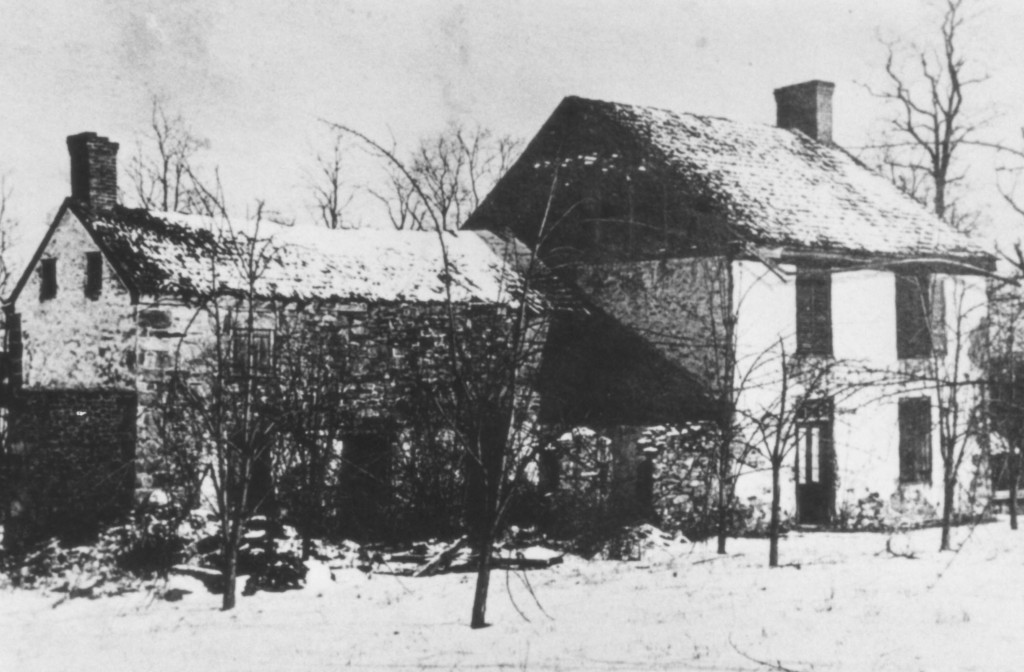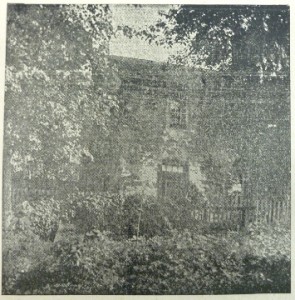Nathaniel Saxton Esq. is one of the more intriguing characters to appear in Hunterdon County history. I have been looking forward to writing about him for a long time.
Amwell Township
Amwell Township was created in 1708, in an area north of Burlington County. It did not belong to a county until 1714 when Hunterdon County was created. It contained Raritan, Delaware and East & West Amwell Townships until 1838 when Delaware and Raritan were created. In 1844, what was left of Amwell was divided into East and West. The Flemington, Lambertville and the Borough of Stockton also originated in Amwell Township.
Moses Quinby Departs
Before I write about the new owners of the Raven Rock mills (Nathaniel Saxton and George Holcombe), I must give due notice to Moses Quinby and the remainder of his stay in Amwell (Delaware) Township.
Cooper & Curry, Aftermath
What Became of Mahlon Cooper?
It is too bad that Cooper and Curry could not hang on long enough to enjoy the short-lived prosperity caused by the War of 1812. But perhaps that surge in economic activity helped them to recover from their losses in Hunterdon County. I do not know how their creditors recovered, since the sales of the mill property brought in so little ($7 and $50). I gather that Cooper and Curry were not expected to make up the difference, having lost everything in the lawsuit.
Cooper and Curry
It has been a long time since I published my last installment in the saga of Raven Rock. The last post described Moses Quinby’s purchase of the 75 acres adjoining Bull’s Island. This one will discuss the millers Mahlon Cooper and Robert Curry, whose 10-acre mill lot was adjacent to the 75 acres and to Bull’s Island.
Quinby Conveyances
As the end of the 18th century approached, ownership of Raven Rock and Bull’s Island was changed from a single large landowner to multiple owners with different ways of exploiting the resources of the neighborhood.
Bull’s Island Fisheries
Fishing rights in the Delaware River were legally transferable, and that gives us a hint of what was happening at Raven Rock and Bull’s Island in the 18th century. In 1782, Isaiah Quinby leased fishing rights in the Delaware River to various people. He may have done this before 1782, but this is the earliest record available.
Raven Rock (Saxtonville) & Bull’s Island, continued
John Ladd
John Ladd was one of the Quaker immigrants who came to West New Jersey in 1678. He was also on hand when William Penn was designing the layout of his new town of Philadelphia. Family tradition says that Penn offered him a choice of one of the best squares in the city or £30, and that Ladd chose the money, whereupon Penn said: “John thou art a ladd by name and a lad by nature, doesn’t thee know that Philadelphia will be a great city?” (Ah, Penn—such a joker.)
Raven Rock and the Saxtonville Tavern
There has been some interest lately in finding a way to preserve the old Saxtonville Tavern in the village of Raven Rock. It is currently owned by the State of New Jersey under its Green Acres program. Sadly, this means it is unoccupied, which is one of the worst things that can happen to an old house. The State of New Jersey desperately needs a program of resident curators for its historic properties.
Washington’s Headquarters, Raritan Township, 1777
by Jonathan M. Hoppock
Democrat-Advertiser, 26 September 1901
The above view of this old mansion now standing on the farm of Manning Dilts in Raritan Township, at the top of what is known as Buchanan’s or Dilley’s Hill, built in 1725, making it one hundred and seventy-six years old, was recently photographed by Mr. J. C. Sunderlin of Flemington.1 From this elevation the eye has a view of the Raritan valley as far east as Bound Brook. Also from this point a view can be had of the Sourland Mountain range from the Delaware on the west, extending through the counties of Hunterdon and Somerset, presenting to the view a greater scope of country than can probably be seen from any other point in the county.
White Hall Recruiting Station, 1775-1781
by Jonathan M. Hoppock
Democrat-Advertiser, 24 October 1901

This old building, erected in 1758 at Head Quarters, now Grover, standing on the corner of the road on the farm at present owned by Smith Skinner, was, between the dates given above, used as a recruiting station.1 As shown by papers in possession of the writer, Captain David Jones, of the Continental line, was the recruiting officer, and at this point, when the alarm was given that the then hated minions of King George had made a landing at Paulus Hook (Jersey City) or Amboy, would assemble the patriotic old citizen-soldiery, armed with the flint-locks, home-made bullets and powder horns, and from thence hasten to the front to assist the great Washington in beating back the invaders.2
